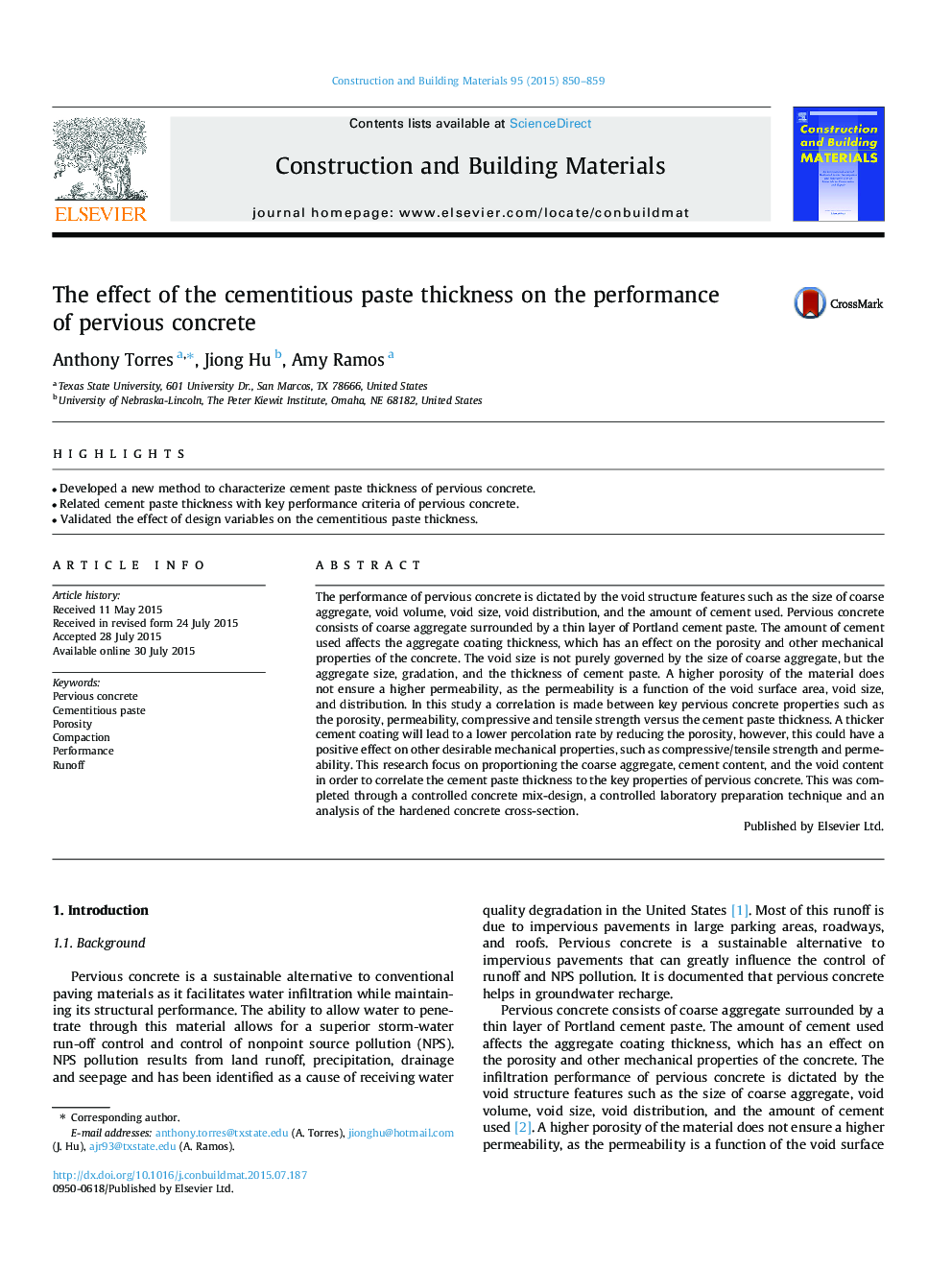| کد مقاله | کد نشریه | سال انتشار | مقاله انگلیسی | نسخه تمام متن |
|---|---|---|---|---|
| 256836 | 503562 | 2015 | 10 صفحه PDF | دانلود رایگان |
• Developed a new method to characterize cement paste thickness of pervious concrete.
• Related cement paste thickness with key performance criteria of pervious concrete.
• Validated the effect of design variables on the cementitious paste thickness.
The performance of pervious concrete is dictated by the void structure features such as the size of coarse aggregate, void volume, void size, void distribution, and the amount of cement used. Pervious concrete consists of coarse aggregate surrounded by a thin layer of Portland cement paste. The amount of cement used affects the aggregate coating thickness, which has an effect on the porosity and other mechanical properties of the concrete. The void size is not purely governed by the size of coarse aggregate, but the aggregate size, gradation, and the thickness of cement paste. A higher porosity of the material does not ensure a higher permeability, as the permeability is a function of the void surface area, void size, and distribution. In this study a correlation is made between key pervious concrete properties such as the porosity, permeability, compressive and tensile strength versus the cement paste thickness. A thicker cement coating will lead to a lower percolation rate by reducing the porosity, however, this could have a positive effect on other desirable mechanical properties, such as compressive/tensile strength and permeability. This research focus on proportioning the coarse aggregate, cement content, and the void content in order to correlate the cement paste thickness to the key properties of pervious concrete. This was completed through a controlled concrete mix-design, a controlled laboratory preparation technique and an analysis of the hardened concrete cross-section.
Journal: Construction and Building Materials - Volume 95, 1 October 2015, Pages 850–859
